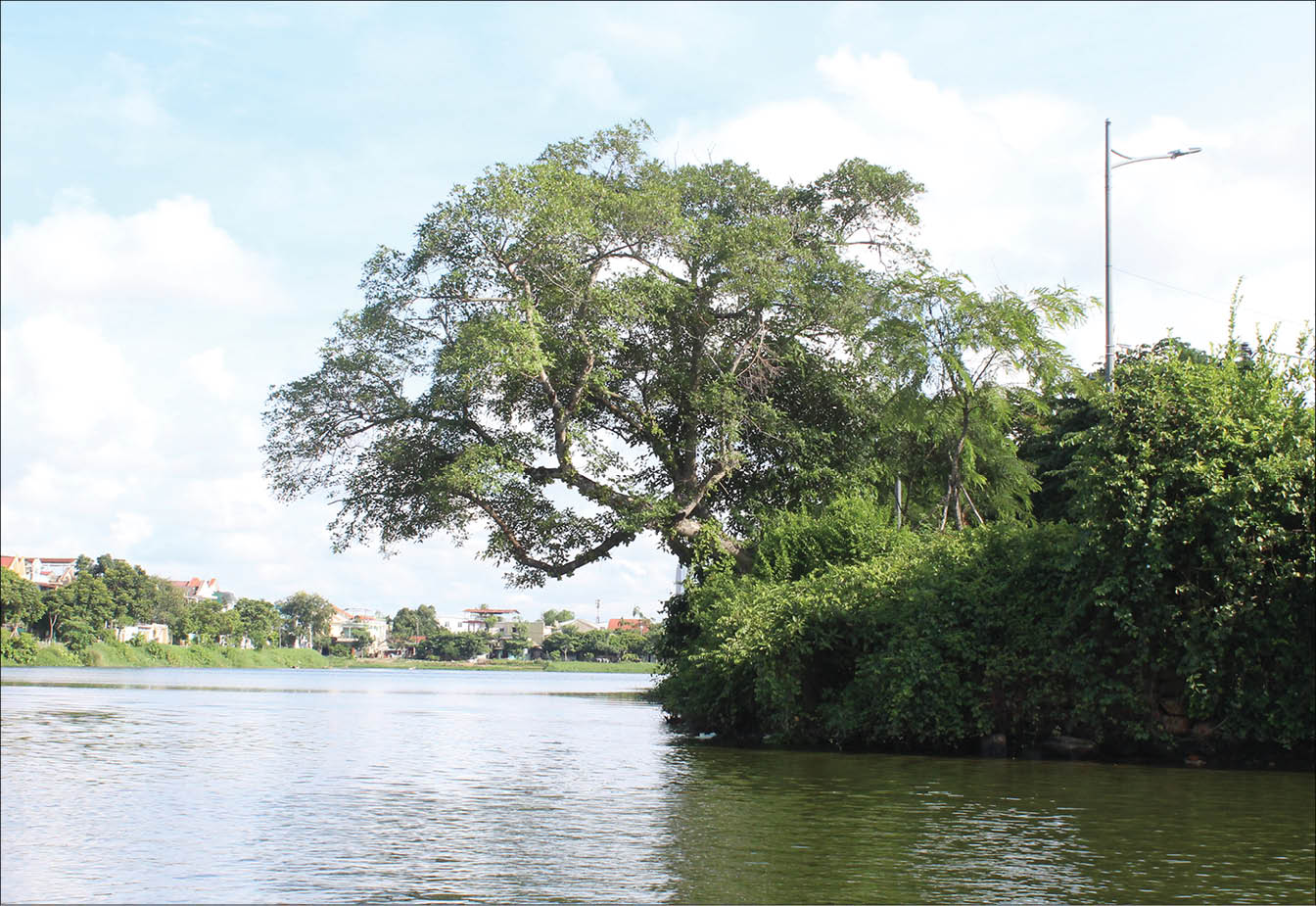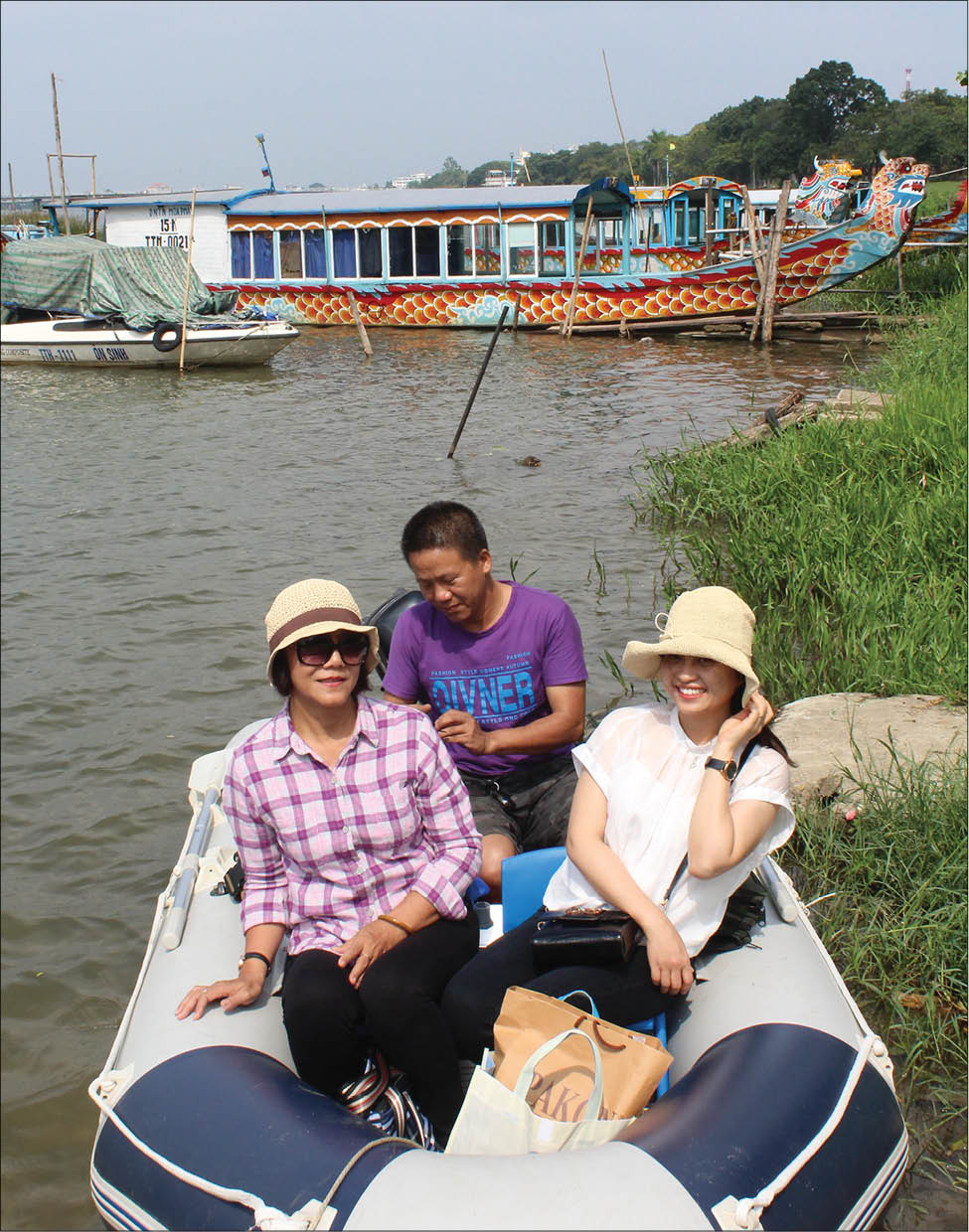According to the book Dai Nam Thuc Luc, compiled by Quoc Su Quan (the bureau specializing in recording history) of the Nguyen Dynasty, in April of the 4th year of Gia Long’s reign (1805), the king had Hue Citadel constructed by enlarging the town of Phu Xuan, originally built by Lord Nguyen Phuc Khoat in 1739.
Earlier, Emperor Gia Long had sent Nguyen Van Yen to survey villages outside the old citadel and to measure the land, in preparation for the construction of the new citadel. As the result, the eight villages: Phu Xuan, Van Xuan, Dien Phai, An Van, An Hoa, An My, An Bao and The Lai (Huong Tra District, Thua Thien Town) were planned to be the citadel.
In that area there were three rivers: Perfume, Kim Long and Bach Yen. In the construction of the Citadel, the upper part of Kim Long River was filled up, the lower part was transformed into Ngu Ha Canal and another part into Tinh Tam Lake and Hoc Hai Lake in the Citadel.
The lower part of Bach Yen River was adjusted to become the river to protect the Citadel in the North. Emperor Gia Long had Dong Ba River and Ke Van River dug to protect the Citadel in the east and the west. These two rivers, together with the Perfume River in the south and Bach Yen River in the north, form the "water quadrangle" surrounding the Citadel.

The scenery along the two banks of Ngu Ha Canal
Ngu Ha is a man-made canal in the shape of a carpenter’s square. It flows through the Citadel and is linked with the “water quadrangle" by the two water gates: Tay Thanh Thuy Quan (Western Water Gate) and Dong Thanh Thuy Quan (Eastern Water Gate), forming a perfect system of water routes from outside to inside.
However, Ngu Ha Canal had gradually lost its original function due to wars and encroachment. After being dredged and embellished, Ngu Ha, the “King River,” was reborn. Hue people desire to go boating on Ngu Ha Canal for sightseeing while travel companies cherish a boating tour, taking tourists to visit legendary Hue Citadel through Perfume, Ke Van, Dong Ba and Bach Yen Rivers and Ngu Ha Canal.
While other people were cherishing the dream of boating on Ngu Ha Canal, Mai Ba Chien was the first person in Hue who made the dream come true. Chien invested his own money in purchasing a boat with a 15 horsepower Mercury motor and found his own way to explore the fairy scenery in Hue, following different routes.
Chien invited me to take a “water trekking” tour on his boat. From the Wharf N.5, Le Loi, we rode upstream towards Kim Long, then entered Ke Van River in the west of the Citadel. After the distance of about 200m, the boat made a right turn to enter Ngu Ha Canal through the East Water Gate. Previously this portion of the river had got completely stuck. It was later cleared and tourist boats now can go through easily.

Beginning the “water trekking” journey
After the Western Water Gate, Ngu Ha Canal became wider and an open and poetic view appeared in front of our eyes. The blue sky, the white clouds and the calm river together with the scenery on both sides that kept changing gave us strange feelings beyond our description. The boat went through Vinh Loi Bridge and Khanh Ninh Bridge, then turned left to the north, following the flow of Ngu Ha Canal.
At one end of Khanh Ninh Bridge stood a majestic stele house inside which was a stele engraved with Khanh Ninh Kieu Bi Ky, compile by Emperor Minh Mang. For those who choose to explore the legendary Citadel in this way, this relic deserves a look.
After going through Khanh Ninh Bridge, we rode upstream to the north, then made the right turn towards Kho Bridge in the east. In the north of the bridge, there was another stele house in which another stele was inscribed with Ngu Che Ngu Ha Bi Ky, compiled by Emperor Minh Mang as well. This stele, together with Ngu Che Khanh Ninh Kieu Bi Ky stele and Ngu Che Dan Thuong stele are the three stelae about the history, the function and the benefits of Ngu Ha Canal in the Nguyen’s Era.

“Water trekking’ on Ngu Ha Canal to behold Hue Citadel is an interesting experience
After Kho Bridge, we continued along the wall in the east of Fish Gill Bastion, a military fortress of the Nguyen Dynasty, which is presently the Headquarters of the Provincial Military. This was the most beautiful scenery in the journey. We rode the boat under a sewer leading to Hoc Hai Lake, on which stood Tang Tho Pavilion, which had in the past kept the most important documents of the Nguyen Dynasty.
Leaving Hoc Hai Lake, we continued east. We rode through Luong Y and Thanh Long Bridges to enter Dong Ba River, admiring the city, wharves, temples, villages along the river banks from Thanh Long Bridge to Bai Dau Bridge before entering the Perfume River to visit the ancient town of Bao Vinh.
The boat continued to take us to visit the ancient town of Bao Vinh, Dia Linh Village and the ancient port town of Thanh Ha, which used to be one of the busy ports in Cochinchina.
After visiting Thanh Ha - Bao Vinh, we rode upstream to Hen Isle. We visited the temple worshipping Lady Hen on an islet. We dropped by Dap Da Wharf, then continued the journey to contemplate the scenery and historical and architectural constructions on the Perfume River itself and on its banks such as Truong Tien Bridge, Dong Ba Market, Huong Giang Hotel, Thuong Bac Pavilion, Royal Boathouse, Pavilion of Edicts, Flag Tower, Soldiers’ Memorial in front of Quoc Hoc High School.
We ended our exciting “water trekking” journey at the same wharf at sunset when the last rays of light of the day were shining on the silvery water.
Mai Ba Chien promised me another ride the following week, taking another route: we would go upstream to visit Kim Long Village and Thien Mu Pagoda, then turn to Bach Yen River at Xuoc Du Bridge, passing Long Ho, Thong Market, Ba Ben, An Hoa, then follow Bach Yen River flowing to the north of the Citadel to Bao Vinh, drop by Thanh Phuoc Village to visit Ky Thach Phu Nhan Temple before stopping at Lai An to see Sinh paintings.
Since it sounded so exciting, I agreed right away and promised to join him in the next “water trekking” tour.
Story and photos: TRAN HUYEN